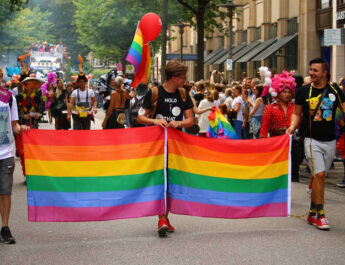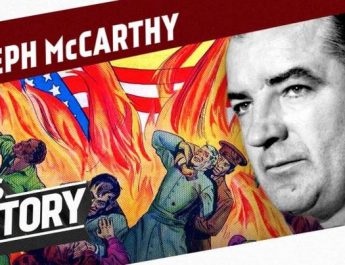Artikeln är tidigare publicerad på International Viewpoint av David Mandel och Canadian Dimension.
To understand Alexei Naval’nyi’s significance, one needs some idea of the nature of the political regime in the Russian Federation.
This is a ‘Bonapartist’-type regime, in which the state administration, and proximity to it, are the principal sources of accumulation. Consequently, for this administration, holding onto power is the overriding interest of the state (the constitution was recently amended to allow Vladimir Putin to remain president until 2035), and corruption is at its core. This regime was initially established with the enthusiastic support of the major capitalist states, which were ultimately disappointed to see their creation rebel against its semi-colonial status.
In terms of political liberties, the regime can be termed a “soft dictatorship”—it tolerates these liberties (much more than the former Soviet regime, apart from its first and last years), but only insofar as they do not pose what it considers a serious threat. And the margin of toleration has been narrowing progressively over the past decade, so that even one-person picketing was recently subjected to restrictions. Legal strikes have long since been practically impossible. Socially, this is an extreme neoliberal regime.
In the last few years, the most visible political opposition to this regime has been organized by Aleksei Naval’nyi, a 44-year old lawyer of mixed Russian and Ukrainian descent born in the Russian city of Obninsk.
Since the main thrust of Naval’nyi’s political activity has been to expose official corruption, both economic and political (fraudulent elections), and since his calls for (illegal) demonstrations have mobilized tens of thousands, the regime naturally views him as a serious threat. He has been subjected to various criminal prosecutions—preventing him, among other things, from running in presidential elections—culminating in last August’s nearly-successful assassination attempt, into which the regime has not yet even opened a criminal inquiry.
Although Naval’nyi’s main message to the Russian public has been about the endemic corruption of the Putin regime, he has made some effort in the past several years to promote socio-economic demands too, including better wages, higher pensions, and progressive taxation. He has also created a kind of virtual trade-union movement of public sector workers in response to the government’s unfulfilled promise to raise their salaries. Some members of Russia’s rather weak socialist left have found this social turn encouraging. But the main message of Naval’nyi’s public activity remains the state’s rampant corruption, a message that clearly finds resonance in a so profoundly unequal and overall quite poor society.
The focus on corruption, rather than on socio-economic demands, is no doubt explained by the fact that Naval’nyi is himself a liberal, albeit with an ethnic-Russian nationalist (that is, racist) bent, which has been suppressed and to some extent whitewashed over the past decade. Having obtained his university education in law and finance during Russia’s wild 1990s—the period of “shock therapy”—while also working in various private firms, Naval’nyi joined the liberal Yabloko party in 2000, attaining a high-ranking position in the Moscow organization. But he was expelled in 2007 for his racist activity, notably his role that year in founding the short-lived “Narod” (people) movement, dedicated to the defence of “democratic nationalism,” its main programmatic goals being democracy and the rights of ethnic Russians.
In 2010, he started a much-celebrated internet anti-corruption site “Ros-Pil,” dedicated to exposing government corruption. It was in a 2011 interview that Naval’nyi famously called Putin’s ruling Duma (parliamentary) party “the party of crooks and thieves,” an epithet that quickly gained widespread currency across Russia. He became even more prominent through his role in the 2011-12 protest movement against fraudulent parliamentary elections and Putin’s return to the presidency after a four-year hiatus during which he served as prime minister. In 2011, Naval’nyi created the Foundation for the Struggle Against Corruption, devoted to exposing corruption in higher government circles, and in the 2019 regional elections, he promoted, with some success, the tactic of “smart voting,” in which anti-government voters are invited to concentrate their votes on a candidate who is not a member of the ruling party and who has the best chances of winning—a tactic that was somewhat effective.
Naval’nyi and his movement are yet another instance of the growing worldwide populist phenomenon of recent years. His supporters are a largely atomized mass, his movement relying heavily on social media (more than six million YouTube subscribers). This protest movement lacks a coherent program, in particular one that would speak to workers, and any meaningful strategy. Naval’nyi’s latest video exposé, released to coincide with his arrest upon returning from Germany where he has been treated for poisoning, has been viewed by millions. But it does not offer an analysis aimed at fostering a movement of politically conscious citizens. The subject is a palatial complex on the Black Sea coast that cost over $1 billion and, so claims the video, belongs to Putin, who is portrayed simplistically as a man driven by his overwhelming thirst for personal wealth and luxury.
Naval’nyi’s courage and tenacity, as well as his tactical skill, cannot be doubted. But a large majority of Russians do not see him as a credible alternative. Although Russians are far from enamoured with the present regime, in the traditional Russian fashion, based on historical memory, they fear what might come to replace it. And they do not have to look far—indeed, only to Ukraine—to see the altogether dubious results of populist movements in the former Soviet Union (the “colour revolutions”) that ousted sitting governments.
The participation of members of the younger generation has been notable in recent demonstrations called by Naval’nyi (high-school and university students were warned that they would be reported to their respective institutions if they participated in the latest demonstration). But older Russians can remember the “wild 1990s” that followed the demise of the Soviet Union, itself a sort of “colour revolution.” Putin’s accession to power coincided with an economic recovery from a very deep and prolonged depression, the reassertion of Russia’s independence on the international stage and an end to the state’s drift toward balkanization. These factors still play in his favour, while his regime does everything it can to ensure that no credible alternative to Putin can emerge.
Artikeln är tidigare publicerad på International Viewpoint av David Mandel och Canadian Dimension.


